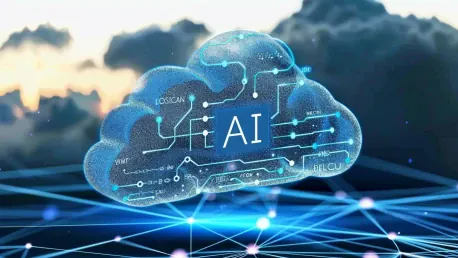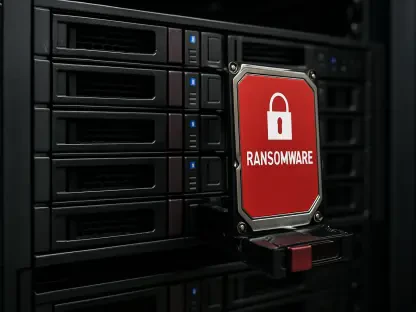The rapid advancement and integration of artificial intelligence (AI) technologies are catalyzing substantial shifts in data center operations and infrastructure, creating unprecedented demand for computing power and storage capacity. This burgeoning demand is leading to significant challenges, particularly in terms of data center shortages. The question arises—can AI and hardware upgrades provide a viable solution to this crisis?
The Data Center Crunch: Rising Demand and Limited Supply
The Impact of AI on Computing Power Demand
The growth of AI, along with cloud computing and other intensive applications, is driving an unprecedented need for computing power. Data centers, the digital storage and processing backbone, are under immense pressure. Critical regions such as Singapore and Northern Virginia are experiencing occupancy rates below 1% despite capacity expansions, according to the Global Data Center Trends 2024 report by CBRE. The demand is clearly outpacing supply, leading to a pressing shortage.In an era where AI technologies are increasingly integrated into various sectors—from healthcare to finance to entertainment—the sheer volume of data generated has grown exponentially. This data needs not only to be stored but also to be processed in real time to extract actionable insights. As businesses leverage AI for analytics and decision-making, their computing resource requirements surge, placing further strain on existing data centers. For instance, machine learning models, which form the basis of many AI applications, require substantial computing power for both training and deployment. This continuous cycle of high-demand applications creates a scenario where the available infrastructure is perpetually catching up to current needs.
Current State of Data Centers and Building Boom
In response to this demand, there is a global boom in data center construction. According to Moody’s, global data center capacity is expected to double over the next five years. However, finding suitable spaces for new data centers is increasingly challenging. This reality is prompting industry leaders to reconsider their strategies for managing and scaling their facilities.The primary challenge lies in acquiring real estate that meets the specific requirements for large-scale data centers. These sites need to offer not just the physical space but also the requisite power supply, cooling solutions, and proximity to fiber-optic networks. As prime locations become scarcer, data center operators are compelled to explore alternatives such as building vertically or employing modular data centers that can be deployed more rapidly and efficiently. Furthermore, the environmental impact and regulatory constraints associated with new constructions are additional hurdles. The industry’s laser focus on sustainability is driving innovation in eco-friendly building materials and renewable energy sources.
The Case for Hardware Replacement
Modern CPUs and GPUs: A Strategic Alternative
A strategic pivot toward hardware replacement rather than mere expansion is emerging as a favorable option. Modern CPUs and GPUs offer enhanced computing power and energy efficiency, presenting a compelling alternative to expanding physical data centers. Robert Hormuth from AMD highlights the potential of transitioning to new CPUs to consolidate computing infrastructure more efficiently.With advancements in chip technology, modern processors are now capable of handling significantly more computations per unit of time while consuming less energy. This leap in performance and efficiency means that fewer physical servers are required to manage the same or even increased workloads. Upgrading to state-of-the-art hardware can drastically reduce the power and spatial footprint of data centers. For instance, the new generation of GPUs, engineered for AI and machine learning tasks, offers parallel processing capabilities that far exceed those of their predecessors. This allows businesses to execute complex algorithms and models faster, with fewer resources.
Efficiency and ROI Considerations
Replacing older servers with modern ones can substantially reduce spatial and power requirements. Hormuth estimates that replacing approximately 100 million servers aged five years with about 21 million new servers could reclaim significant space and energy. This consolidation not only frees up resources but also offers a rapid return on investment, with payback periods as short as two months compared to the substantial financial outlays associated with new data center construction.In practical terms, this means that businesses can achieve a far greater density of computing power within their existing data center infrastructures. The immediate financial benefits are compelling. Older servers are less efficient and require more cooling, driving up operational costs. By contrast, modern servers generate less heat and are designed to be more energy-efficient, reducing both electricity and cooling costs. Additionally, the reduced power consumption aligns well with corporate sustainability goals and regulatory requirements. This approach not only delivers cost savings but also positions companies at the forefront of green technology adoption, enhancing their market reputation and stakeholder value.
Broader Industry Trends in Data Center Modernization
Rising Data Center Spending and the Drive for Modernization
Aligning with the hardware upgrade approach, the data center industry is seeing a significant uptick in planned upgrades. Gartner projects a sharp 24.1% increase in data center spending for 2024, covering servers, external storage, and networking equipment. This trend underscores a broader recognition of the necessity to update infrastructure to support sophisticated applications and maintain a competitive edge.The surge in spending is indicative of the broader digital transformation efforts underway across industries. Businesses are investing heavily in upgrading their IT infrastructure to stay competitive in an increasingly digital world. This encompasses not just hardware but also software, networking, and security technologies. The focus is on creating agile, resilient, and scalable data environments that can support future growth. Companies are also increasingly turning to hybrid cloud solutions, combining on-premises data centers with cloud services to balance cost-efficiency, flexibility, and control. This hybrid approach offers the best of both worlds, enabling businesses to leverage the scalability of the cloud while maintaining control over critical applications and data.
The Role of Modern Hardware in Supporting AI and Machine Learning
The modernization effort is driven by the need to manage compute-hungry workloads more efficiently. Modern hardware offers better performance, reliability, and security, essential for AI and machine learning applications. These workloads require infrastructure capable of higher performance without disproportionately increasing spatial or power demands.As AI and machine learning models become more sophisticated, their computational requirements also grow. Training deep learning models, for example, involves processing vast amounts of data through numerous iterations, demanding substantial processing power and memory. Modern GPUs and specialized AI accelerators are designed to meet these exact needs, offering unparalleled processing power and efficiency. Furthermore, newer hardware architectures incorporate advanced security features, providing enhanced protection against cyber threats that are increasingly targeting data-rich environments. This focus on security is crucial, as the integrity and confidentiality of data are paramount in applications ranging from autonomous vehicles to healthcare diagnostics.
AI as a Solution to Its Own Impact
AI Tools for Monitoring and Managing Hardware Efficiency
Interestingly, AI is also seen as a potential solution to the very capacity issues it exacerbates. AI tools can monitor and manage hardware efficiency, predict component degradation, and optimize replacement strategies. Timothy Bates from the University of Michigan suggests that proactive management using AI can prolong the life of existing infrastructure, reducing immediate capacity constraints and strategically incorporating necessary upgrades.AI-driven management systems can provide real-time insights into the operational status of data center components. These systems utilize machine learning algorithms to analyze performance metrics and detect anomalies that may indicate impending failures. By forecasting hardware degradation, AI enables preemptive maintenance, effectively minimizing downtime and extending the lifespan of critical infrastructure. Moreover, AI can optimize energy consumption by dynamically adjusting power and cooling resources based on real-time demand, further enhancing efficiency. This intelligent management approach creates a more resilient and sustainable data center environment, capable of adapting to fluctuating workloads and operational conditions.
Leveraging AI for Cost and Performance Optimization
The integration of AI in data center management can optimize both costs and performance, ensuring that existing resources are used more efficiently. This dual approach of hardware upgrades, supplemented by AI-driven management, can address current capacity challenges while preparing for future demands.AI’s ability to analyze vast datasets and derive actionable insights can revolutionize how data centers operate. For example, AI algorithms can optimize workload distribution across servers, balancing the load to prevent bottlenecks and maximize resource utilization. These optimizations can lead to significant energy savings, reducing operational costs and minimizing environmental impact. Additionally, AI can enhance security by continuously monitoring for irregular activities and responding to threats in real-time. By leveraging AI for both strategic planning and day-to-day operations, data centers can achieve higher levels of efficiency, reliability, and performance. This holistic approach ensures that data centers are not only capable of meeting current demands but are also well-prepared for future technological advancements.
A Balanced Approach: Building and Upgrading
The Dual Strategy of Expansion and Modernization
Industry experts advocate for a hybrid strategy combining selective new data center construction with strategic hardware replacements. This dual approach could effectively balance space limitations, cost constraints, and the growing need for computational power.By adopting a mixed strategy, companies can flexibly allocate resources where they are most needed. Selective new builds can address immediate capacity demands in high-growth areas, while hardware upgrades can optimize existing infrastructure. This balance helps to mitigate the risks and costs associated with large-scale construction projects, such as regulatory hurdles and substantial capital expenditure. It also allows for incremental expansion, making it easier to adapt to changing market conditions and technological advancements. Furthermore, this strategy can facilitate a more sustainable approach to data center management, aligning with industry-wide commitments to reducing carbon footprints and enhancing energy efficiency.
Summary of the Nuanced Consensus
The rapid advancement and integration of artificial intelligence (AI) technologies are driving substantial changes in data center operations and infrastructure. These technological leaps are fueling an unprecedented demand for computing power and storage capacity, posing significant challenges, such as data center shortages.As AI becomes increasingly integral to various industries, data centers are under immense pressure to scale up their resources. This surge in demand is causing bottlenecks, as existing infrastructure struggles to keep pace. The question then arises—can AI innovations and hardware upgrades effectively address this burgeoning crisis?One potential solution lies in leveraging AI to optimize data center operations. AI can enhance energy efficiency, manage workloads more effectively, and predict maintenance needs, thereby extending the life of existing hardware. Additionally, advancements in hardware, like more efficient processors and storage solutions, can provide the necessary upgrades to meet growing computational requirements.Another approach involves adopting edge computing, where data processing occurs closer to the source of data generation. This can alleviate some of the pressure on centralized data centers by distributing the computing load.In summary, while AI and hardware innovations present promising avenues to mitigate data center shortages, their implementation requires careful planning and significant investment. The balance between expanding infrastructure and optimizing existing resources will be crucial in navigating this challenge.









